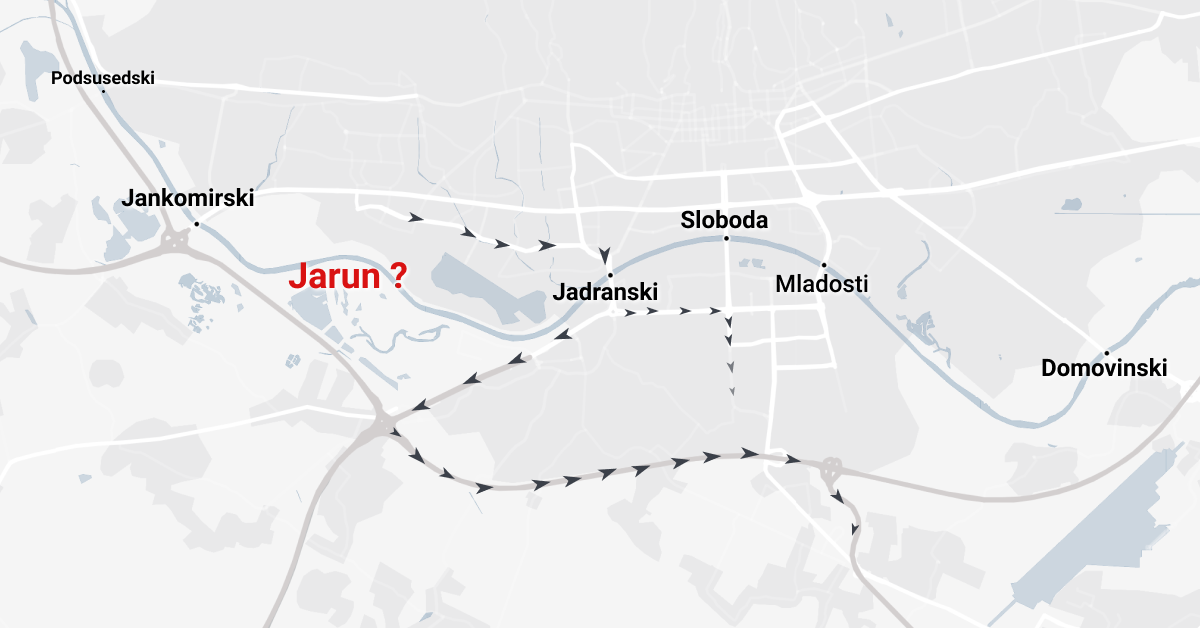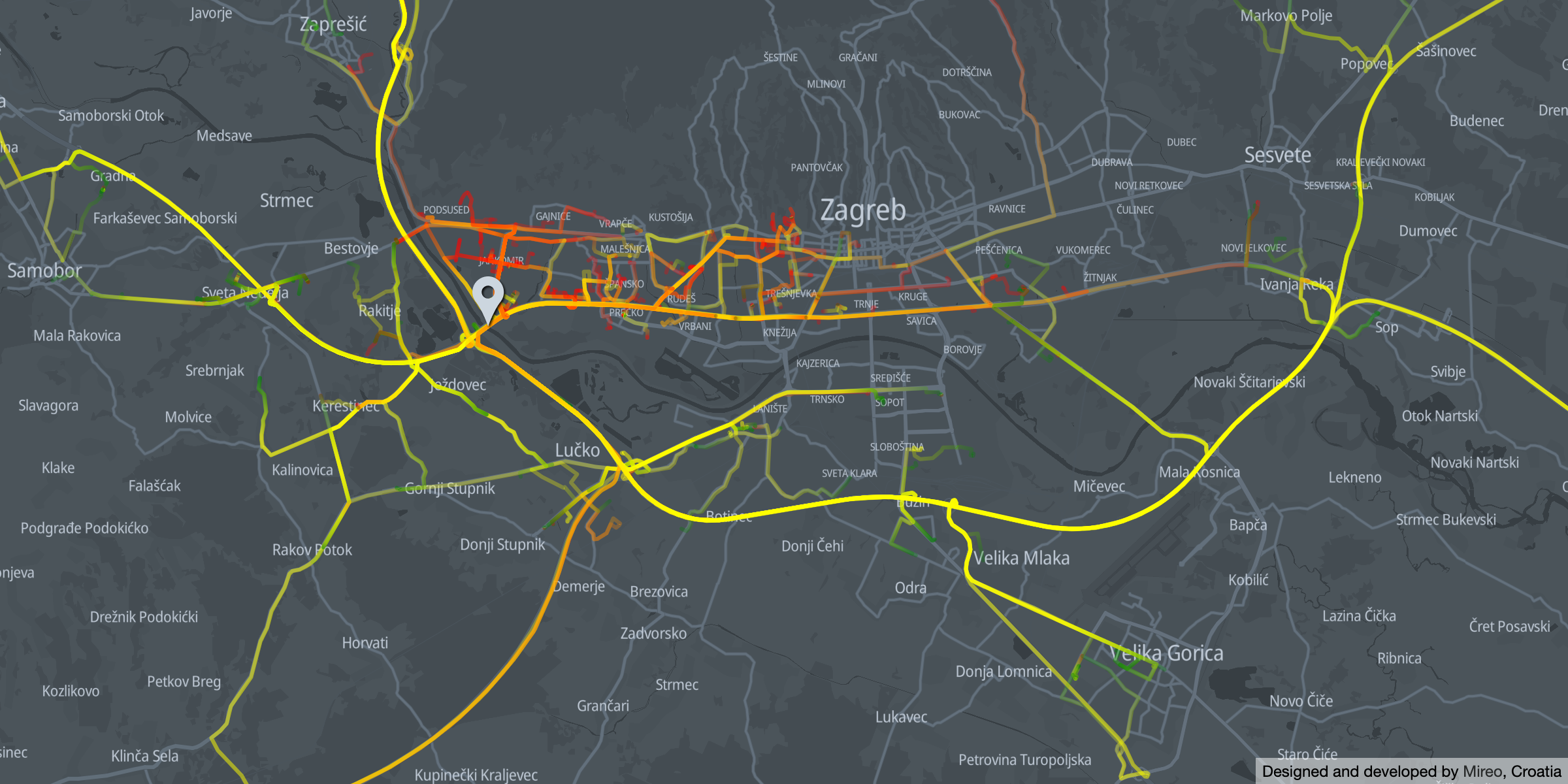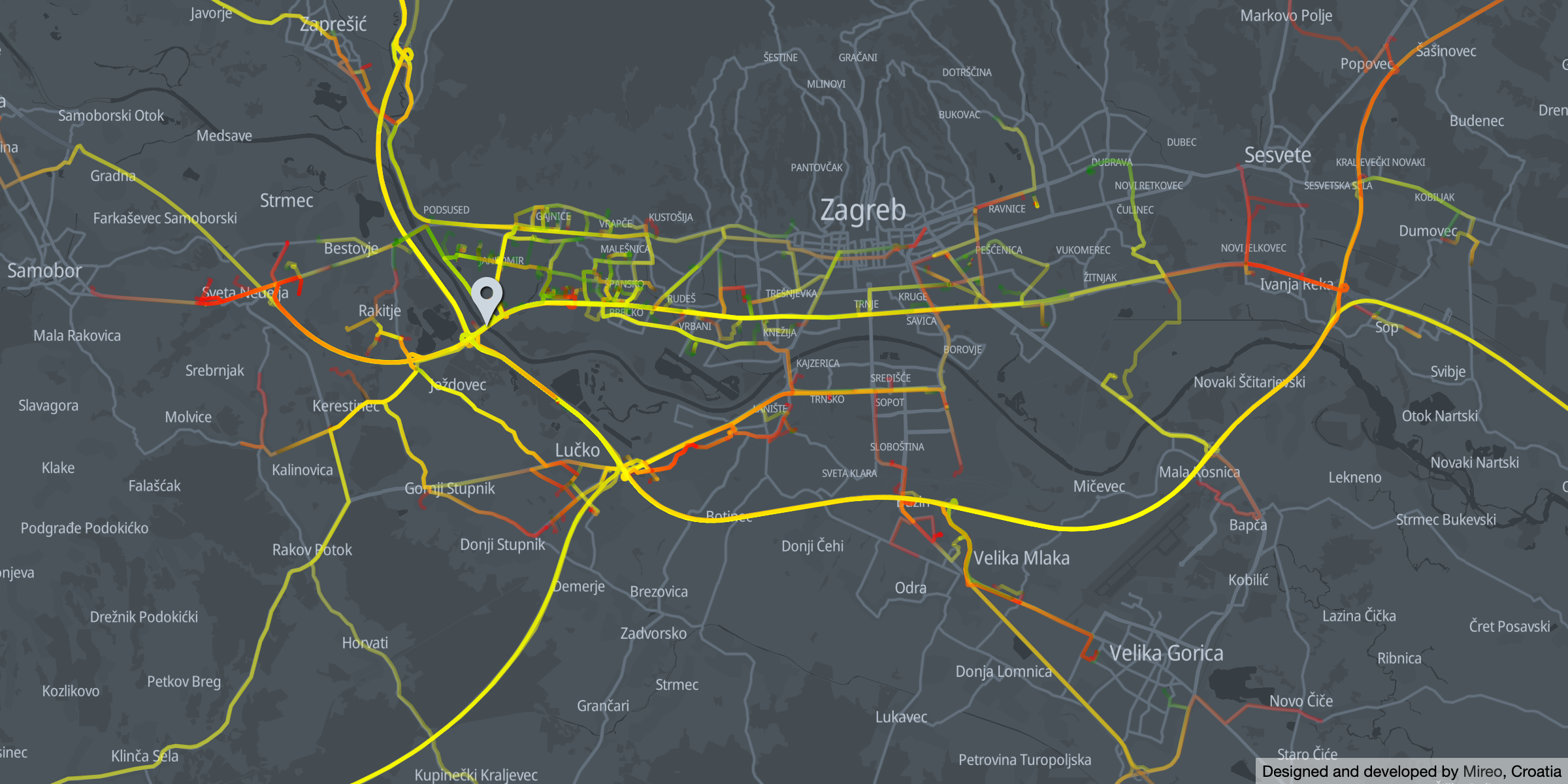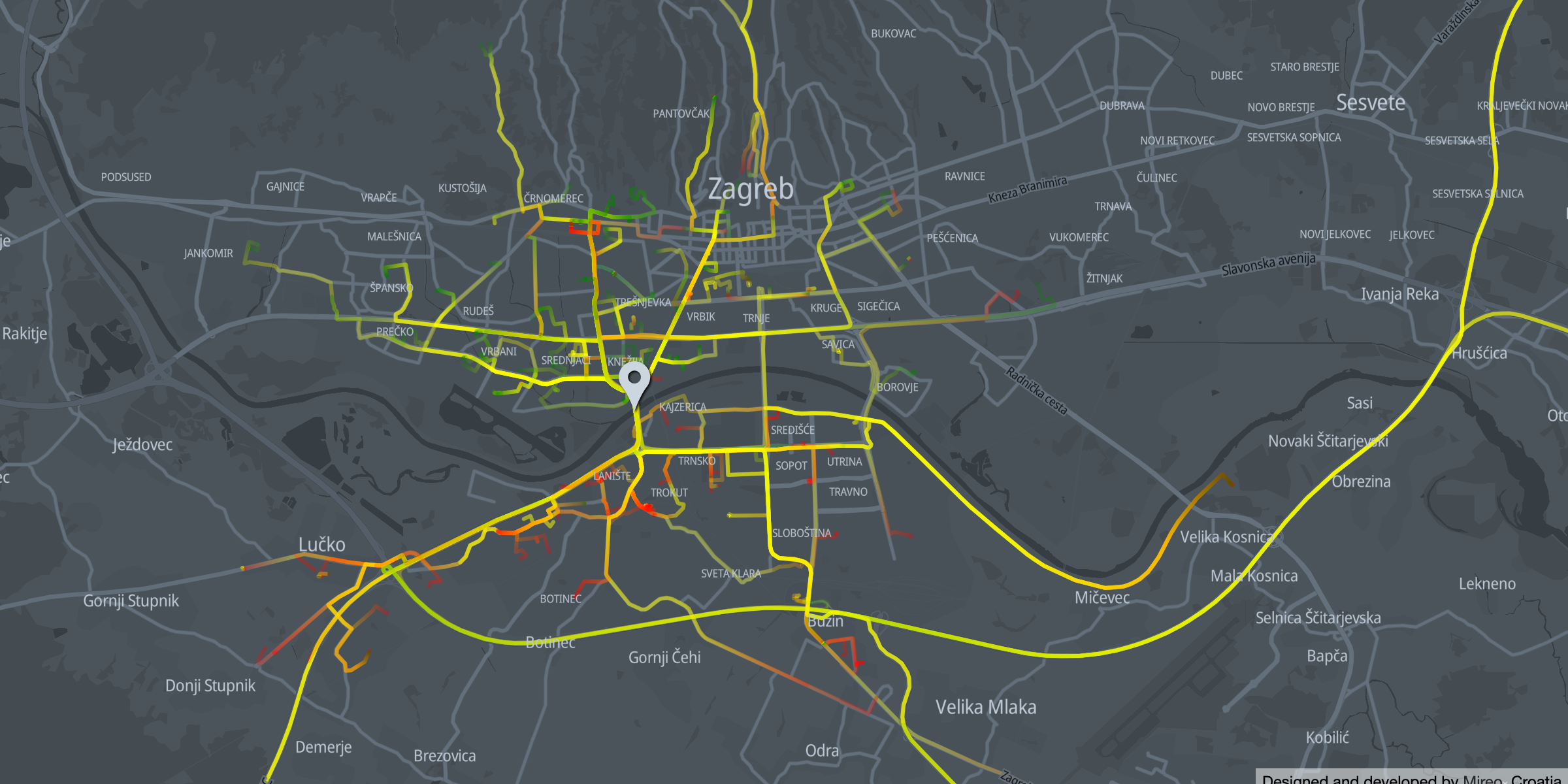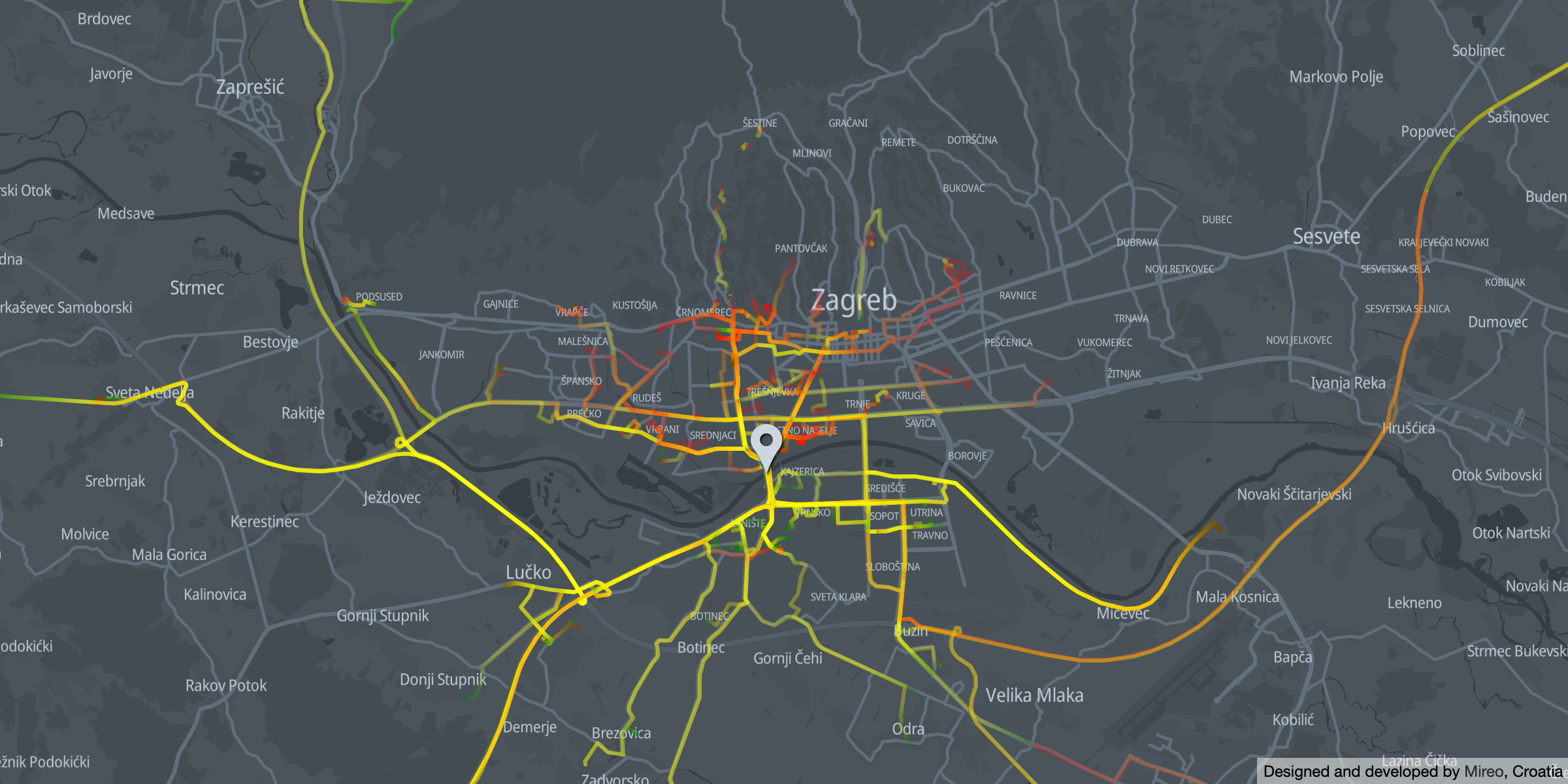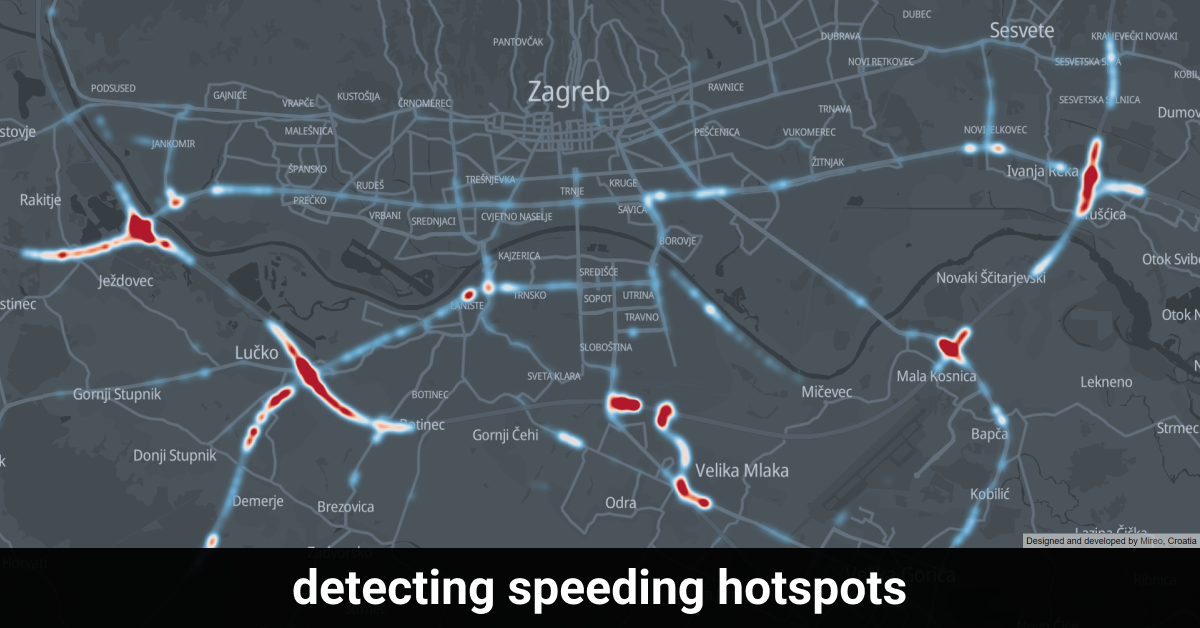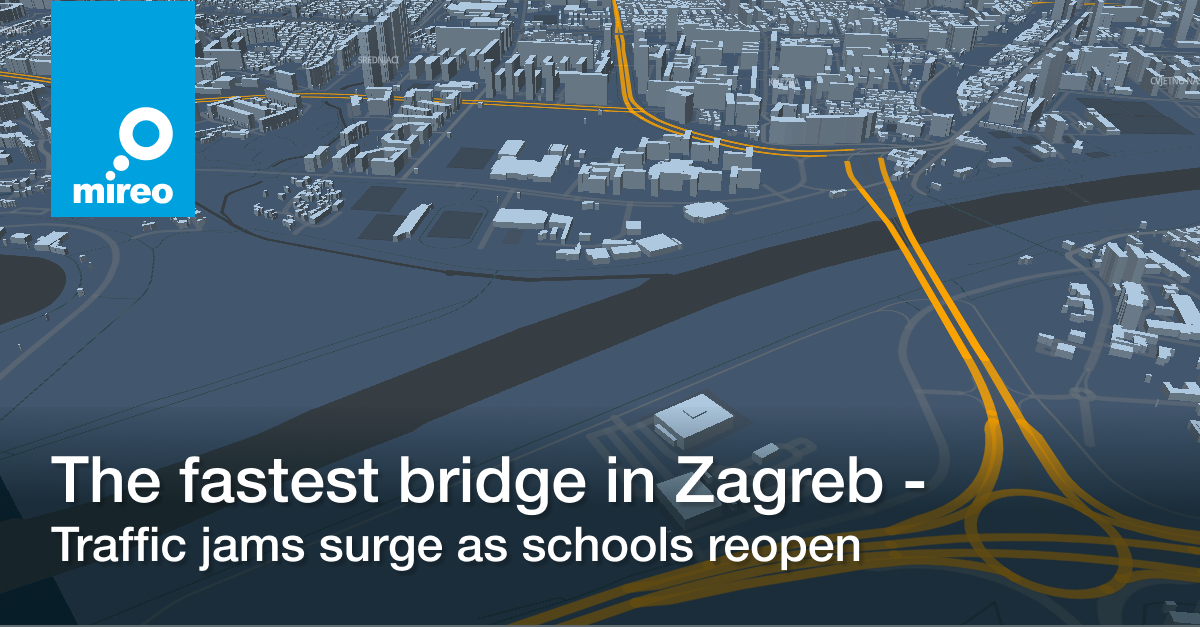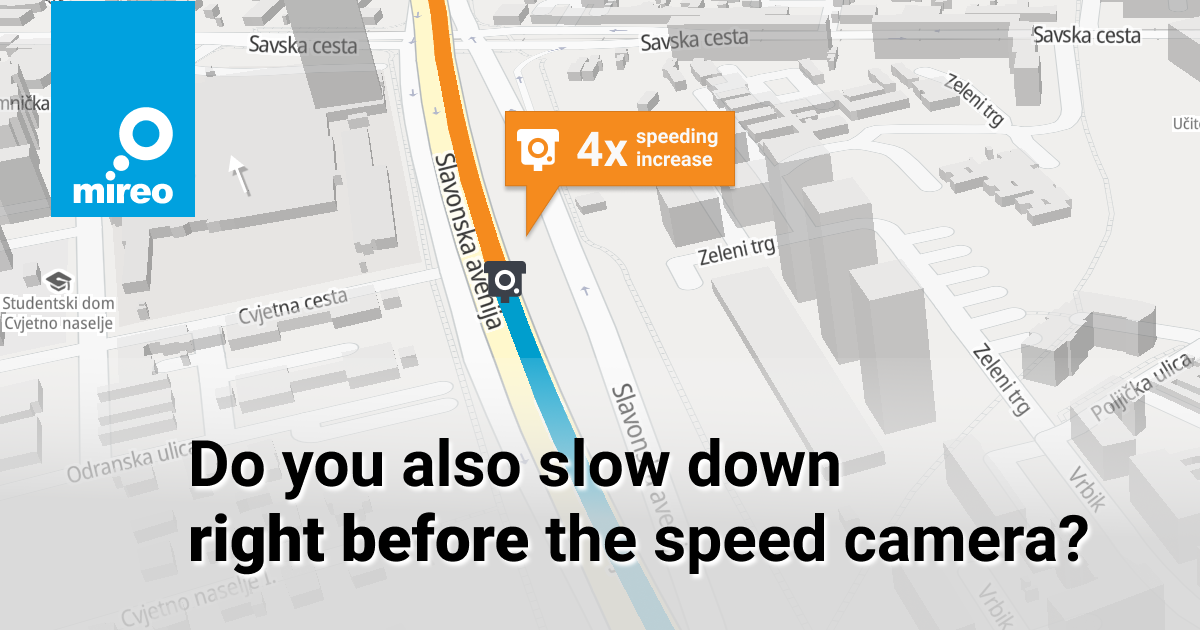What about other bridges?
For a reference, let's address the commuting patterns of other bridges:It's evident how strictly specific city parts gravitate towards the particular bridge. Moreover, major roads are determining the boundaries of city parts gravitating towards bridges.The bridges are also functionally different. The outer bridges have a specific transit functionality - to reach the city bypass, most possibly as a way of avoiding city traffic. The inner bridges, closer to the strict city center, distinctly connect two Sava riverbanks.
Liberty Bridge
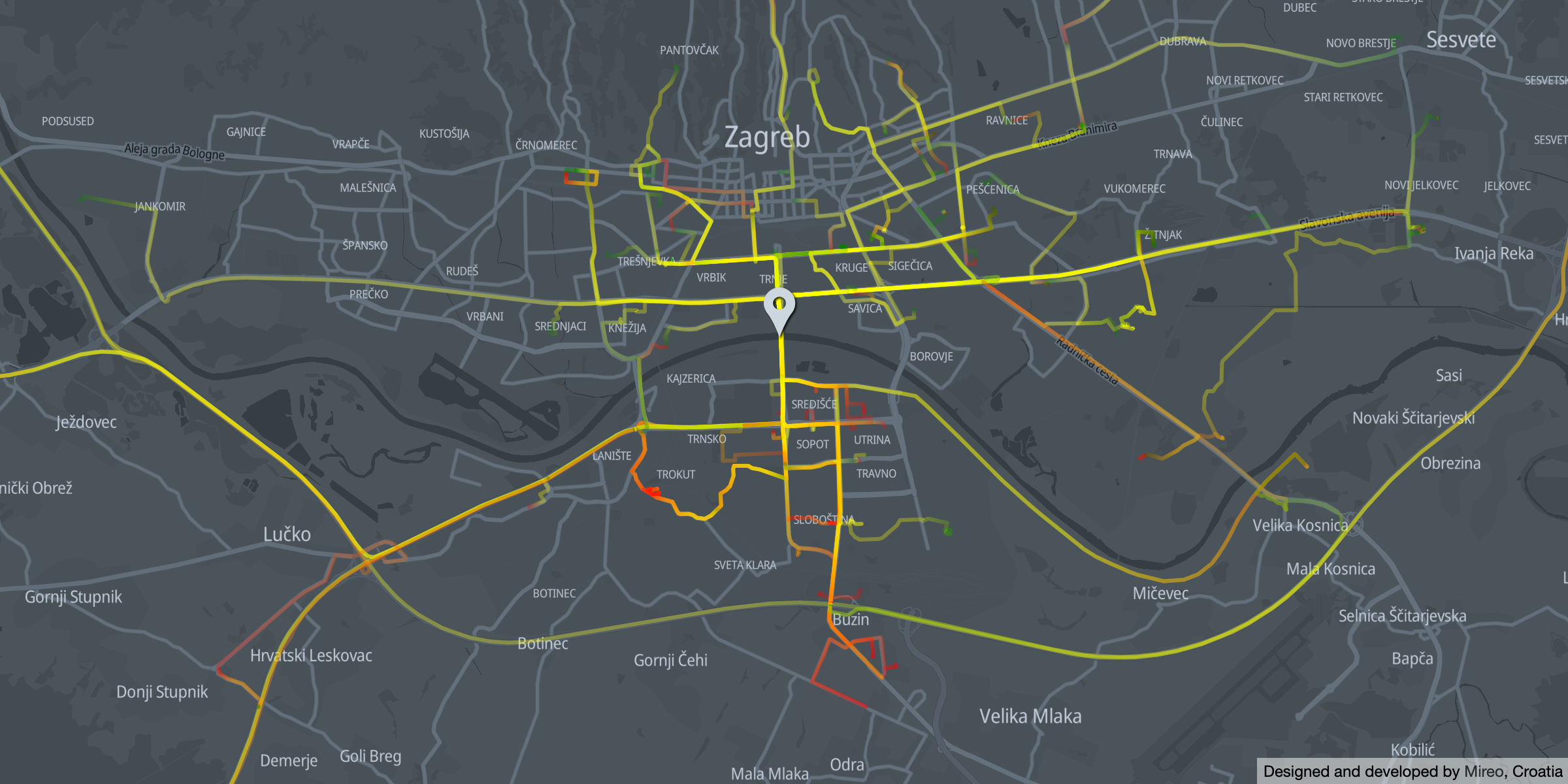
Morning traffic across Liberty Bridge - direction south - green color indicates trip origin; red indicates destination
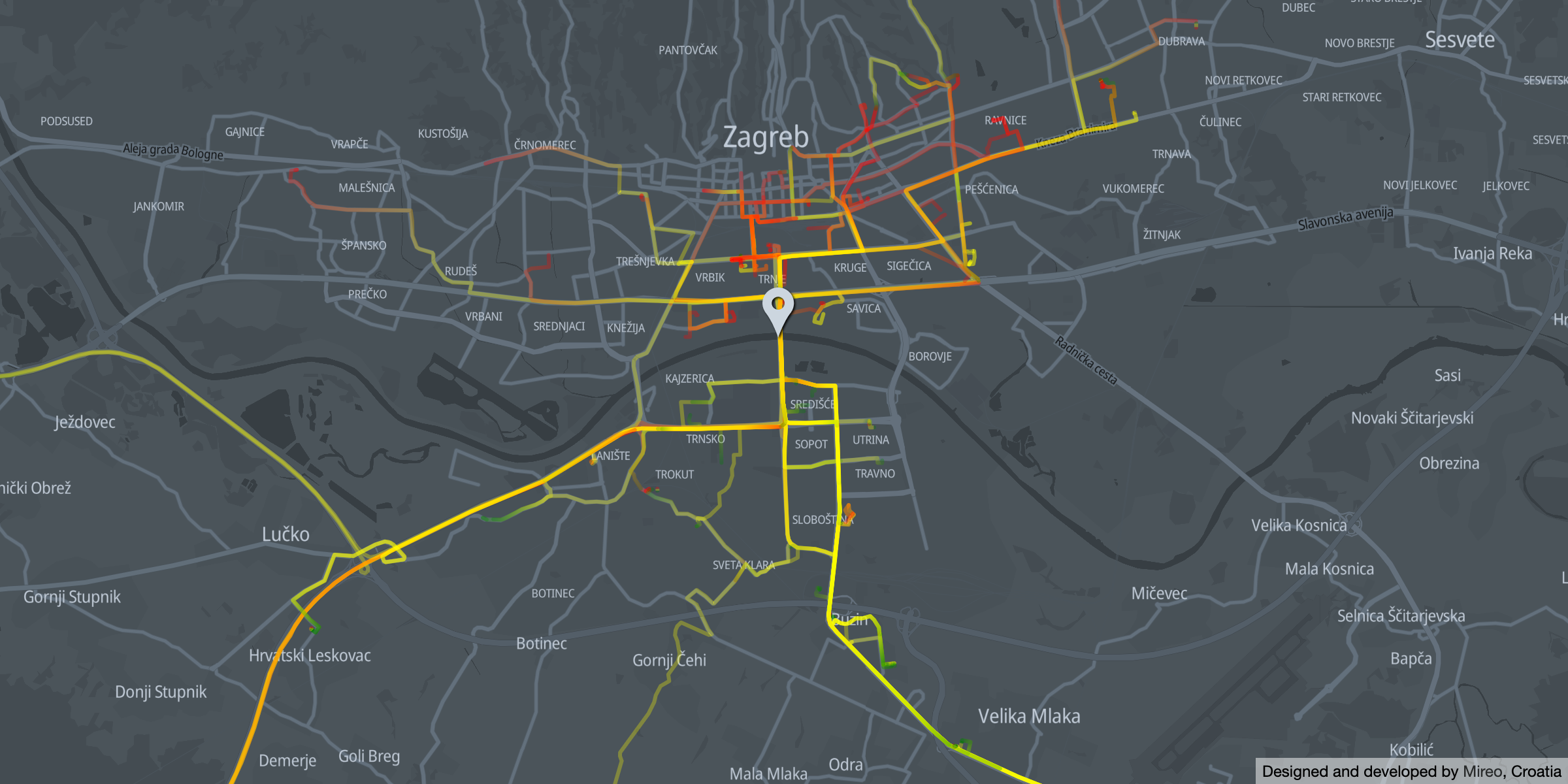
Morning traffic across Liberty Bridge - direction north - green color indicates trip origin; red indicates destination
Due to its central position, the Liberty Bridge (Most Slobode) is often dubbed as "The middle bridge", and is mostly used for north-south traveling between:
- on the north, suburbs bounded by Selska cesta and Heinzelova (Trešnjevka North, Center, Trnje), and
- Novi Zagreb on the south.
It's also apparent how nearby southern cities of Velika Gorica and Sisak are also gravitating towards the Liberty bridge.
Youth Bridge
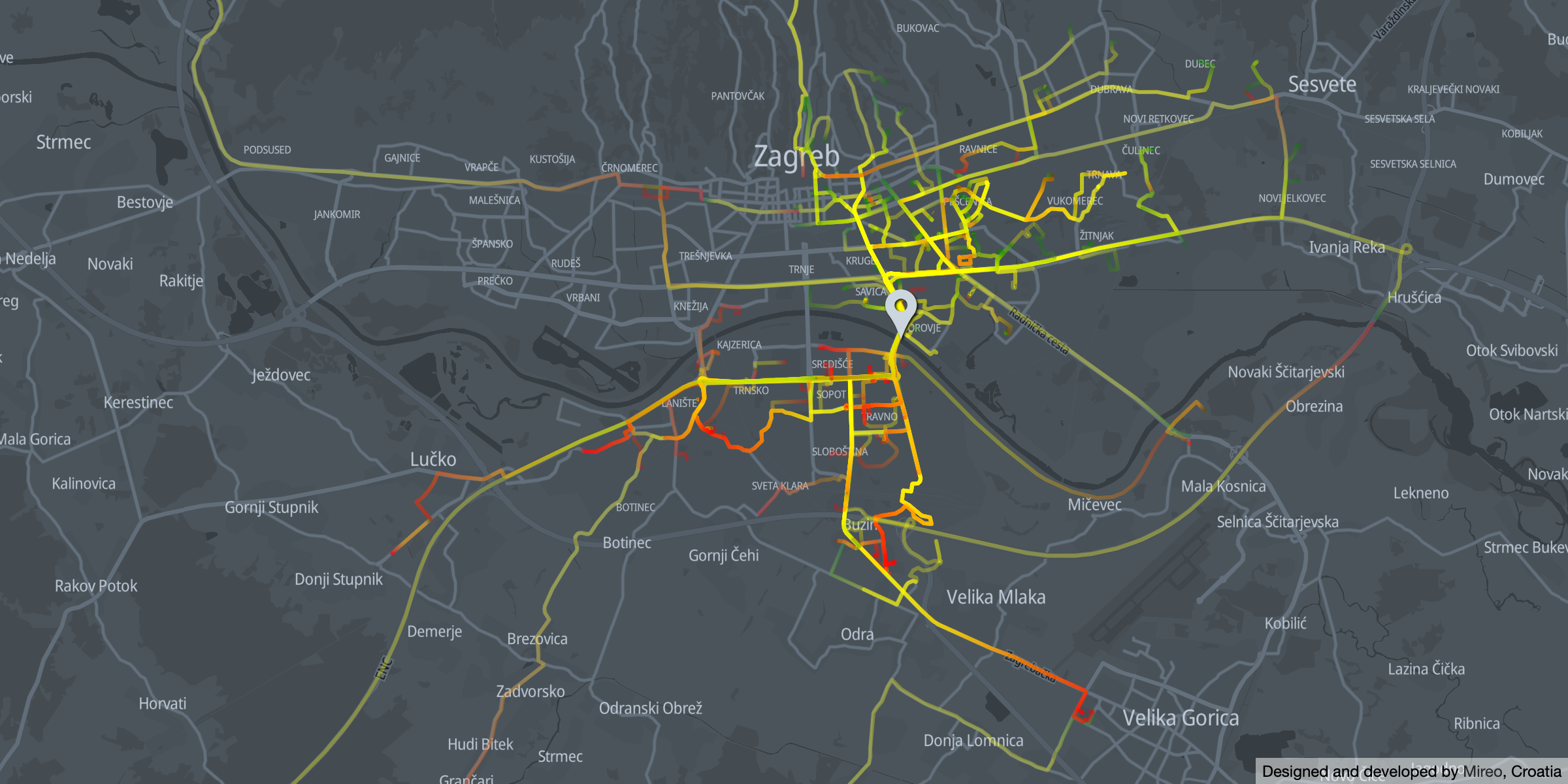
Morning traffic across Youth Bridge - direction southgreen color indicates trip origin; red indicates destination
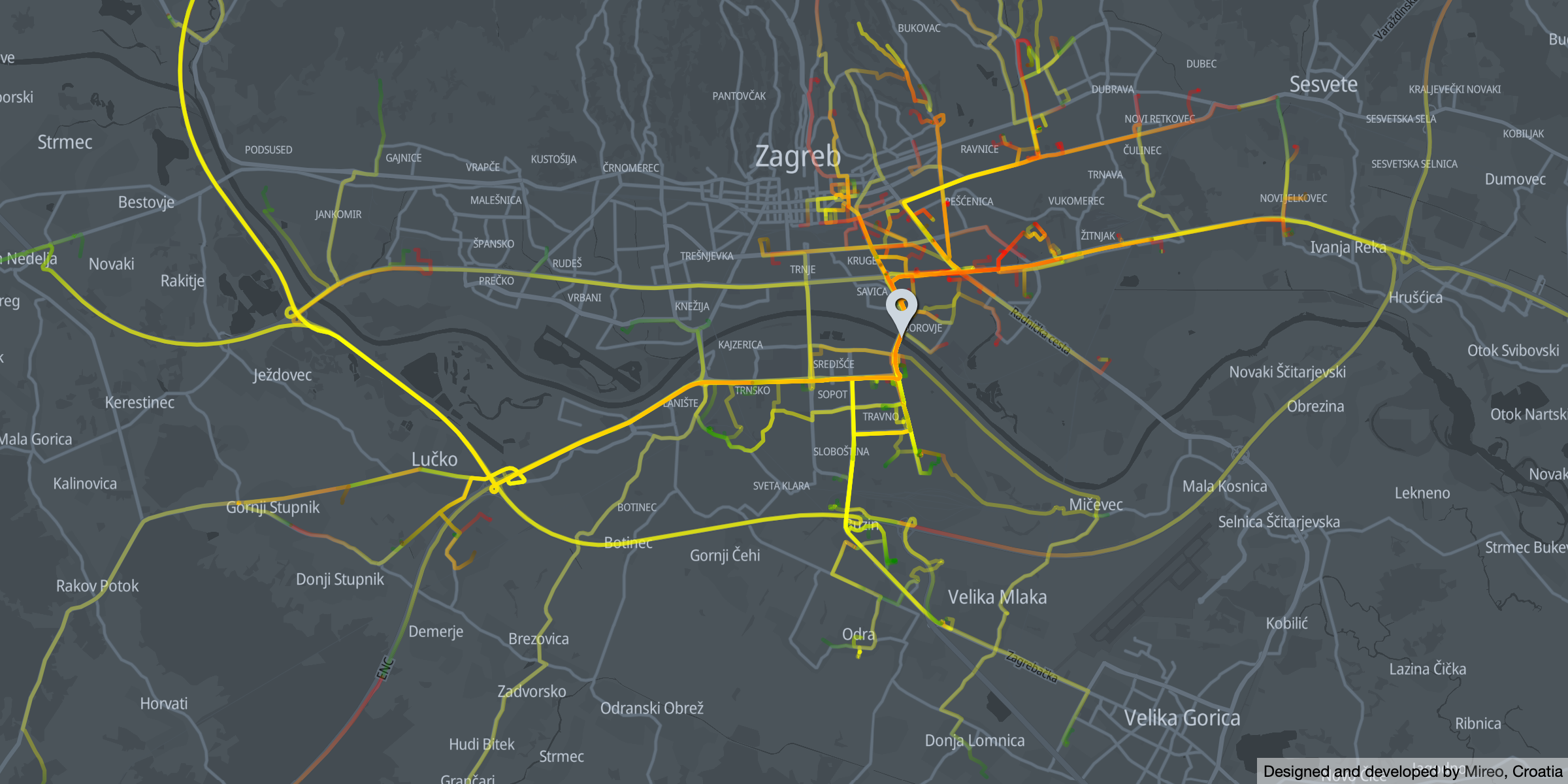
Morning traffic across Youth Bridge - direction north - green color indicates trip origin; red indicates destination
The Youth Bridge (Most mladosti) also shows a clear distinction in origin and destination suburbs. It's predominantly used for travel between:
- suburbs eastern from Držiceva St (Pešćenica, Maksimir, Dubrava) and
- Novi Zagreb and Velika Gorica on the southern bank.
Traveling direction towards and from Lučko interchange is also prominent.
Homeland Bridge
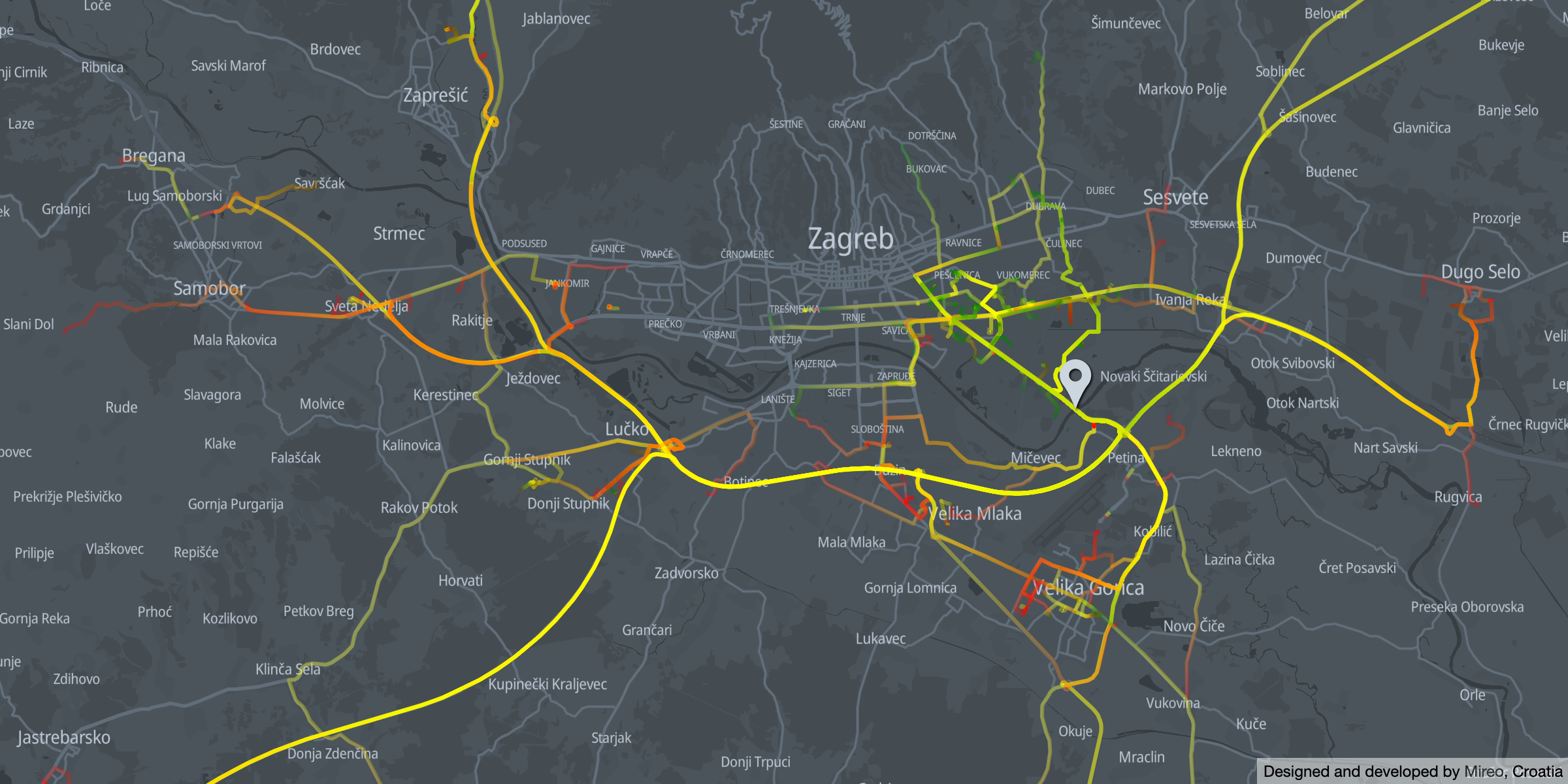
Morning traffic across Homeland Bridge - direction Velika Gorica - green color indicates trip origin; red indicates destination
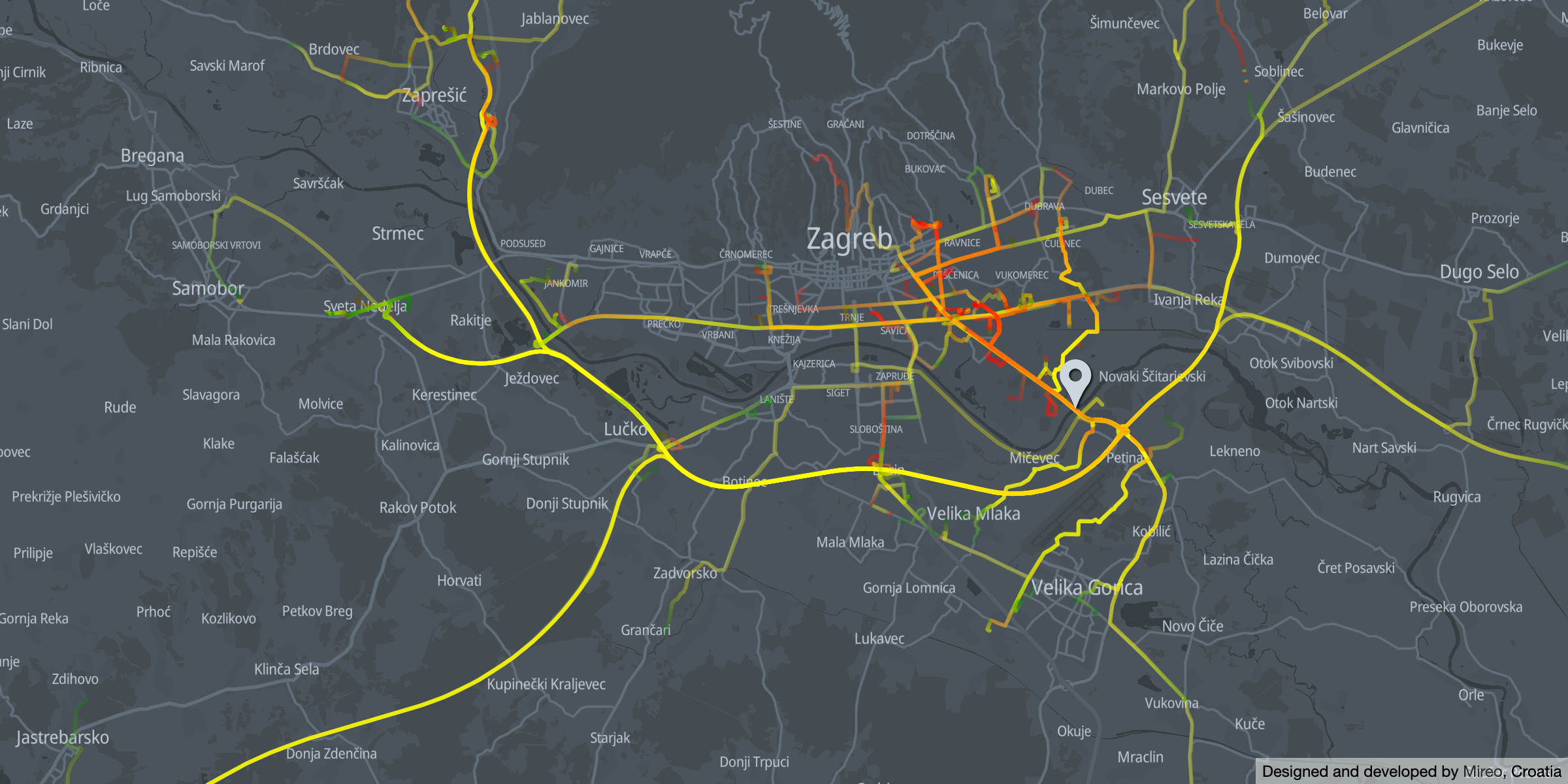
Morning traffic across Homeland Bridge - direction Zagrebgreen color indicates trip origin; red indicates destination
The Homeland Bridge (Domovinski most) has a distinct transit role - to facilitate the traveling between eastern suburbs and Zagreb bypass:
- suburbs bounded by Heinzelova on the west and Čulinecka on the east
- Zagreb bypass exits - continuing traveling towards/from Sesvete, Dugo Selo, Velika Gorica, Lučko, Samobor, and Zaprešić
